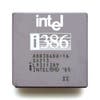

I’m a computer and open source enthusiast from Toronto, Ontario, Canada.
This profile is from a federated server and may be incomplete. Browse more on the original instance.

I’m a computer and open source enthusiast from Toronto, Ontario, Canada.
This profile is from a federated server and may be incomplete. Browse more on the original instance.
All TTC subway riders getting cellphone service starting Oct. 3, federal minister says (www.cbc.ca)
Remote or hybrid workers, would you rather work a 4 day week on site, or WFH completely for 5 days a week, for the same pay?
I know this will vary a lot, so hypothetically let’s say you currently WFH/work remotely at least 3 days a week. Your commute to work takes an hour max (door to door) each way. If you were given the choice of a 4 day week working onsite, or a 5 day week WFH (or as many days as you’d like) for the same pay, which would you...
hurting but comforted (imgur.com)
She just got diagnosed with Intervertebral disc disease (IVDD) & can’t walk or stand very much suddenly. We’re adapting & right now she’s in her favorite place in this universe - nuzzled into my boyfriend’s side
“I know what NOT to do, what should I actually DO?” — a short primer for being publicly charming as a dude (medium.com)
deleted_by_author
deleted_by_author
Need help finding a great KVM Switch
Hi everyone!...
SMTP Relay Questions
I use O365 Business (Or whatever the heck they call it now) for my email, so for SMTP on all my devices at home, I use an O365 account with an app password, sending as a distro-group so it can have a custom name...
Why are there hidden ads in Voyager?
I just swiped accidentally from the top of the screen and uncovered an off-screen ad in Voyager. What is this and is this disclosed anywhere?...
Rust Malware Staged on Crates.io (blog.phylum.io)
I successfully installed Gentoo for the first time today! (lemmy.world)
Screenshot of QEMU VM showing an ASCII Gentoo Logo + system info...
[Solved] UUID for root reverted to previous UUID
I suddenly got the same problem in /efi/loader/entries all conf files reverted to previous uuid (first post ). To change uuid I just edited all conf files with the correct uuid for root....
Can someone send me an invitation to cock.li email?
Or possibly give directions where I can try to get such an invitation?
School Spyware
Hi. My school just started issuing devices last year, and they have this Lightspeed spyware on them. Last year I was able to remove it by booting into Linux from a flash drive and moving the files to a separate drive and then back at the end of the year. This year I have heard from sources that they have ways of detecting...
Is it possible to let selected app icon also apply to the iOS app bar? (lemmy.world)
Setting the app icon for Voyager seems to only apply to the icon shown for the app on the selected screen, but it does not for example apply to the icon shown for the running apps carousel.
Orion browser for macOS and iOS/iPadOS (browser.kagi.com)
I’ve been testing the Orion browser for macOS and iOS/iPasOS for a few days. It’s WebKit-based, and Apple OS exclusive. First impressions are positive, although I haven’t put it through its paces (check multi-device iCloud settings sync, push tabs to its limits, dig into exactly how it protects privacy by syncing through...